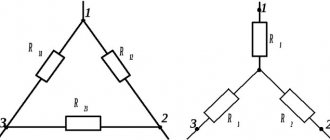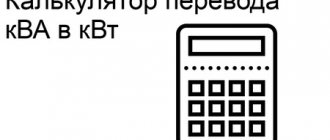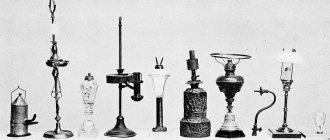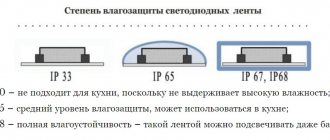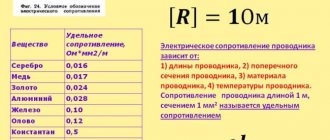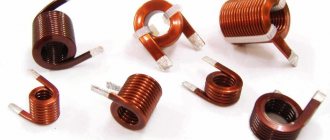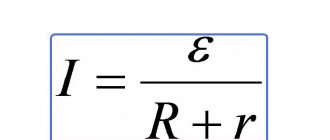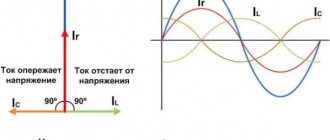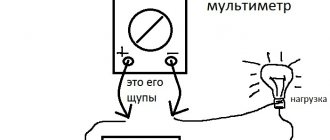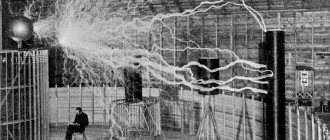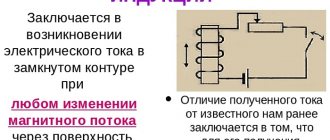The answer to the question of who invented electricity requires an analysis of the experiments and discoveries made in the industry. In search of an explanation for the phenomenon, which is a stream of charged particles, scientists have combined different areas of research. History gives the role of the founder of the science of electricity to Benjamin Franklin, who experimentally confirmed the electrical nature of atmospheric discharges. There are many other names of scientists, incl. beginners who made a great contribution to the development of the science of electricity.
History of origin
Many years ago, people observed natural phenomena of an electrical nature. In 600 BC. In Greece, it was experimentally established that fossilized resin rubbed with wool attracts objects.
In the 30s In the 20th century, archaeologists found pots containing copper sheets. These peculiar lighting batteries were discovered in Baghdad, which suggests that the development belongs to the ancient Persians.
In 1600, the word electricus was used by William Gilbert to describe the static energy produced by the mechanical interaction of substances. Thomas Brown used the category “electricity” (“amber”) in a number of research works. From this time on, an era of experiments began in order to unravel the nature of the phenomenon. The date of each of them is written into history.
In the 17th century a generator was invented, insulators and conductors were classified, particles with “+” / “-” charges were differentiated. Since the 18th century and humanity still produces, generates and consumes electricity.
The period of early discoveries prepared the basis for the development of science, research, and the development of equipment for transporting electricity.
Thunder and lightning
Thunderstorms usually occur during hot weather in summer; when the hot air flowing from the surface of the earth is saturated with moisture, they rise. When water droplets and ice crystals spin in the air currents of thunderclouds, they become charged with electricity. Tiny, positively charged ice crystals move upward, while negatively charged gradients collect at the bottom of the cloud.
Just as small objects are attracted by electrostatic induction from a charged fishing line, a charged cloud is attracted to the ground. The negative charge on the underside of the cloud is attracted by the positive charge to the ground, and a strong spark (lightning) is formed between them. A lightning discharge heats the air and causes it to expand, accompanied by a thunderous sound. Sound travels through air much more slowly than light, which is why we see lightning first and then hear thunder.
When friction occurs, metals not only become easily electrified, but also conduct electricity very well. Therefore, when a metal object is in the hands of a person, a charge passes through the human body. Electricity generated by friction is more common in materials that are poor conductors, such as glass, rubber, plastic, resin, these materials are called insulators. Since no electricity is transmitted through them, they are called static electricity. Faraday also called it "ordinary" electricity, but nowadays we use electric (moving) current everywhere. So now it's more of a "regular" thing.
If you have rubber or plastic soles and have walked on carpet, you will feel a slight electric shock when you touch a metal doorknob. This means that your body has had time to charge itself with electricity when you rub the soles of your feet on the carpet,
Sometimes a person gets electrocuted when he gets out of his car and closes the door. He is most likely wearing wool or cotton clothing that has been electrocuted by a synthetic car seat. If it also has a rubber or synthetic sole that has an insulating effect, then the charge can only be released if it touches the metal handle. To avoid this, you can try touching something metal inside the car before leaving. Then the charge will be reduced and there will be no unpleasant effects,
Stages of creating an electrical theory
The development of electromagnetism was facilitated by the experiments of Andre-Marie Ampere. The unit of current included in the SI was named in his honor. Charles Augustin de Coulomb studied friction processes and the properties of substances.
Otto von Guericke created the first electrical device. It was a sphere of sulfur mounted on a metal rod. Alessandro Volta developed a direct current generator. The research activities of Georg Simon Ohm influenced the development of the theoretical basis of this direction. German physicist Gustav Robert Kirchhoff discovered 2 laws of circuit theory. Heinrich Rudolf Hertz investigated the nature of waves in the medium.
Electric charge
All atoms are surrounded by a cloud of electrons carrying a negative () electric charge. Electrons move around the nucleus. The nucleus has the same total charge as all its electrons, but this charge is positive (+). Usually the positive and negative charges cancel each other and the atom is electrically neutral. But in some substances, some outer electrons have rather weak bonds with their atoms. And when two objects get lost with each other, such electrons can be released and migrate to the other object. As a result of this shift, the object becomes more electron-rich than it should be and gains a negative () charge. The second object has fewer electrons, so it receives a positive (+) charge. The charges thus generated are sometimes called "frictional electricity". Which object receives a positive or negative charge depends on the relative ease with which electrons move in the surface layers of the two objects.
If you wipe a polyethylene line with a woolen cloth, it will receive a negative charge, and if you wipe plexiglass, you will get a positive charge. In either case, the fabric receives a charge opposite to that of the waxed material.
Electric charges influence each other. Positive and negative charges are attracted to each other, and two negative or two positive charges repel. When one negative charge is applied to an object, the object's negative charges move to the other end of the line and the positive charges move closer to the line. The positive and negative charges of the line and the object attract each other and the object remains attached to the line. This process is called electrostatic induction, and the object is said to be caught in the electrostatic field of the fishing line.
Michael Faraday proved that frictional electricity and electric current are one and the same. He also proved that no electric field could exist in a metal cell (now called a Faraday cell).
From electrical theory to exact science
The practical base accumulated as a result of research made it possible to synthesize knowledge and learn how to manage energy. The basis for the formation of exact science was the discovery of the nature of current. The invention of artificial electricity dates back to the period of the 18th-19th centuries. Discoveries were made in a short period, which was associated with the active development of thought.
Thomas Edison made a great contribution to exact science. Nikola Tesla is credited with the theoretical confirmation of magnetism, and the scientist’s developments made it possible to obtain wireless electricity.
Law of Charge Interaction
This fundamental development belongs to Charles Augustin de Coulomb. The founder of the law of interaction of stationary charges established the dependence of the force of 2 point charges: the resulting forces obey Newton’s law.
Invention of the battery
Alessandro Volta's electrical device is a battery. The design is made in the form of a bookcase made of zinc and copper plates. Between them are pieces of felt soaked in sulfuric acid.
An electrical potential was created in the upper and lower parts of the energy source, the discharge of which was felt tactilely. Under the influence of the electrolyte, the interaction of metals occurred at the atomic level. Electrical energy was accumulated inside the structure. Volta's invention led to the development of batteries.
The emergence of the concept of current
This category emerged during the period of laboratory research into electricity by William Gilbert (1600). The concept characterized the ordered movement of particles of matter or such in a vacuum. The current could be of a constant nature or variable in nature. The force index determined the number of electrons, protons, and ions flowing through the cross section.
Electric Circuit Law
The activities of the German physicist Gustav Kirchhoff were associated with theoretical research. The researcher introduced the terms “branch”, “node”, “circuit”, and the established laws became the basis for the introduction of inventions in the electronic and technical industries.
The science that studies electricity
Electricity is a natural phenomenon. It is partly studied in biology, chemistry and physics. Electric charges are most fully considered within the framework of electrodynamics, one of the branches of physics.
Theories and laws of electricity
There are few laws that electricity obeys, but they fully describe the phenomenon:
- The law of conservation of energy is a fundamental law that also governs electrical phenomena;
- Ohm's law is the basic law of electric current;
- The law of electromagnetic induction – about electromagnetic and magnetic fields;
- Ampere's law - about the interaction of two conductors with currents;
- Joule-Lenz law - about the thermal effect of electricity;
- Coulomb's law - about electrostatics;
- Rules of the right and left hands - determining the directions of the magnetic field lines and the Ampere force acting on a conductor in a magnetic field;
- Lenz's rule - determining the direction of the induction current;
- Faraday's laws on electrolysis.
First experiments with electricity
The first experiments with electricity were mainly of an entertaining nature. Their essence was in light objects that were attracted and repelled under the influence of a poorly understood force. Another interesting experience is the transmission of electricity through a chain of people holding hands. The physiological effect of electricity was actively studied by Jean Nollet, who forced an electric charge to pass through 180 people.
Production and practical use
Since the advent of the first generators, many discoveries have occurred and inventions have been introduced into the field of energy generation and transmission.
As a result of scientific research since the last quarter of the 19th century. prerequisites have emerged for the development of the electric power industry, which include:
- creation of turbines;
- development of generators;
- transmission of electricity.
In 1801 in Germany, under the leadership of the Russian engineer M.O. A hydroelectric power station with an industrial capacity of 220 kW was built in Dolivo-Dobrovolsky. In the 20th century The era of widespread use of water energy potential began in the 21st century. The use of natural resources was gradually introduced and increased.
Minerals are used to produce electrical energy. Nuclear energy, which perfectly satisfies electricity needs, is considered the best option compared to alternative resources.
Electricity production (generation) is carried out at industrial facilities. Using hydrogen as a fuel, humanity achieves high combustion efficiency and takes care of environmental cleanliness.
Generation and transmission
The creation of mobile and high-power power plants has influenced the search for practical solutions for transmitting electricity over distances.
This was done through networks that included:
- lines;
- boost and buck converters;
- distribution devices.
The first experiments in transportation belonged to Stephen Gray, who in the 1720s. transmitted the charge through a silk wire.
In 1873, Fontaine demonstrated the use of a generator and a direct current motor connected by a wire 2000 m long. A breakthrough in the transmission of current over long distances was the experiment of M.O. in 1891. Dolivo-Dobrovolsky, during which a 3-phase line was used.
For the transmission range, the main parameter is throughput, the calculation of which takes into account the wave influence of the coupling resistance factors and the generated voltage.
Application
Electricity, being irreplaceable, is used for the following purposes:
- creating a lighting system;
- transfer of information;
- functioning of transport (trams, trolleybuses, trains);
- operation of household and office appliances;
- production and materials processing.
The scope of electricity is so wide that users often do not notice the existence of energy sources.
Where does electric current come from?
Electricity supplied through wires to homes is generated by an electrical generator at various power plants. On them, the generator is connected to a constantly rotating turbine.
The design of the generator has a rotor - a coil, which is located between the poles of the magnet. When the turbine rotates this rotor in a magnetic field, according to the laws of physics, an electric current appears or is induced. Thus, the purpose of the generator is to convert the kinetic force of rotation into electricity.
There are many ways to make a turbine spin, using a variety of energy sources. They are divided into three types:
- Renewable - energy obtained from inexhaustible resources: water flows, sunlight, wind, geothermal sources and biofuels;
- Non-renewable - energy obtained from resources that arise very slowly, incommensurate with the rate of consumption: coal, oil, peat, natural gas;
- Nuclear - energy obtained from the process of nuclear division of cells.
Most often, electricity arises through the work of:
- Hydroelectric power plants (HPPs) - are built on rivers and use the power of water flow;
- Thermal power plants (TPPs) – operate on thermal energy from fuel combustion;
- Nuclear power plants (NPPs) - operate on thermal energy obtained from the nuclear reaction process.
The converted energy travels through wires to transformer substations and distribution devices and only then reaches the end consumer.
Now so-called alternative types of energy are actively developing. These include wind generators, solar panels, the use of geothermal sources and any other ways to obtain electricity through unusual phenomena. Alternative energy is much inferior in productivity and payback to traditional sources, but in certain situations they help save money and reduce the load on the main power grids.
The advent of electricity in Russia
In the middle of the 17th century. Russian scientists Georg Richmann and Mikhail Lomonosov obtained an artificial discharge in a St. Petersburg laboratory. In 1874, Russian engineer A.N. Lodygin developed and received a patent for a lighting lamp, where the filament option was intended for a carbon rod.
After 16 years, this part of the structure was replaced with tungsten. P.N. Yablochkov presented a device using an electric arc. Its action was based on the occurrence of a spark between 2 kaolin electrodes.
He designed an electric arc lamp whose operating life was 4 hours. It was used to illuminate the Winter Palace. Yablochkov candles were used on locomotives as arc spotlights.
Real electric charge
Although the electrical shocks described above are unpleasant, they are nevertheless safe for humans. However, in some cases, the electrical charge caused by friction can lead to accidents. There have been cases of giant supertankers exploding when their fuel tanks were washed away by powerful water cannons. Electric charges arise from the friction of water droplets in the jet of a water gun. This effect is similar to the effect of an air current consisting of water droplets rising in a thundercloud. In such conditions, despite the humid environment, sparks may be generated that threaten to ignite gasoline vapors remaining in the tank.
The plane can also become electrically charged when it encounters a thundercloud or when the landing gear rubs against the ground during landing. In the past, electrical sparks that accumulated on the surface of an aircraft posed an explosion hazard. But now the necessary precautions are being taken. For example, the chassis tires are made of electrically conductive material. Corona (discharge) electrodes are attached to the ends of the aircraft's wings, and all the electricity is collected at the ends of the wings and "sprayed".
Safety measures are also necessary when refueling, since the friction that occurs in the flow of gasoline can undoubtedly lead to a large charge. That's why gasoline pumps are made of iron.
Electricity generated by friction or static electricity is used by humans in various ways. Particles of soot, ash and similar particulates are released into the air along with smoke from numerous plants and then return as deposits. Thanks to electrostatic precipitators installed in the pipes, approximately 98% of particulate matter can be collected and removed before it enters the air. This process is called electrostatic dust removal. In the US, it prevents 20 million tons of soot from being released into the air each year. A special spray system is used for painting cars and aircraft. However, up to 25% of the paint evaporates each time. This can be avoided by imparting an electrical potential to the sprayed particles. Electrolytic paint particles begin to be attracted to the surface of the car or aircraft and adhere better. The savings from efficient use of the spray system exceed the cost of loading the equipment.
The same technology is used for powder coating. The electrified coating appears to adhere to the metal, and when the surface is heated, the powder coating forms a thin, permanent layer.
Electric charge and powder are also used in photocopiers. The text or design appears on the lens and must be copied. This black and white drawing is transferred to paper as a drawing of charged and neutral areas. When black powder is applied to paper, it is attracted only to the charged areas. The powder is then attached to the paper by hot air. This copying technique is called xerography. It is also used in fax machines.
Chronology of discoveries and inventions
In 1752, Benjamin Franklin confirmed the identity of the nature of lightning and sparks.
Alessandro Volta experimentally proved that a number of chemical reactions are accompanied by an electric flow. In 1800, he designed a battery to generate current and transmit it over a distance.
Later, Michael Faraday came up with a generator. This development helped Thomas Edison and Joseph Swan invent the lamp in 1878.
Current research was carried out by Emilius Lenz and Karl Gauss. In 1830, the electrostatic field was discovered. The platinum filament lamp was invented by Warren de la Rue. In the early 1900s. Nikola Tesla developed the commercial direction of this industry. Together with Thomas Edison, he developed a multiphase system for flow distribution. Thanks to his inventions, humanity uses household appliances.
Introduction
Many centuries ago, people discovered the special properties of amber: when rubbed, an electric charge is created in it. Today we can watch TV using electricity, talk to people on the other side of the world and receive light and heat just by flipping a switch. Experiments with amber, i.e. The resin of coniferous trees, which naturally fossilizes, was carried out by the ancient Greeks. They discovered that when amber was rubbed, it attracted lint from wool, feathers and dust. If you rub too hard, for example with a plastic brush, pieces of paper will start to stick. And if you rub the ball on his envelope, it will stick to the wall. As a result of friction of amber, plastic and a number of other materials, an electrical charge accumulates in them. The word “electric” itself comes from the Latin word electricum, which means amber.
Lightning is one of the most spectacular manifestations of electrical charge, lightning appears and is the result of a large accumulation of electrical charges and clouds. In the middle of the 18th century, one of the first researchers of atmospheric electricity, the American scientist Benjamin Franklin, conducted a very dangerous experiment, flying a kite into a stormy sky. He wanted to prove that lightning is the result of the same electrical charge that is created when objects rub against each other,
While electrically charged objects only attract and hold very light objects, a magnet can hold quite heavy pieces of iron. For this reason, magnets were used in ancient times, for example in compasses.
Interesting Facts
Ancient Egyptian doctors, searching for new remedies, knew about the ability of the Nile catfish to accumulate electricity.
Inventions in this industry were preceded by observations of nature:
- Plato and Aristotle mentioned stingrays and their influence on people.
- Pliny the Elder drew attention to the properties of water and metal as conductors.
- In 1819, Hans Christian Oersted studied the effect of electric current on a compass.
- At the time of Nikola Tesla, direct current was difficult to transform into high and low voltage, so the scientist advocated alternating current. Thomas Edison, who patented the developments and did not want to lose royalties from them, launched a campaign to discredit them. When N. Tesla illuminated the city with electricity obtained from a station at Niagara Falls, using alternating current for transmission over a distance, General Electric financially supported the scientist.
- As a result of a powerful lightning strike, a mineral such as fulgurite is formed. Hollow branched tubes with a smooth or bubble-covered surface are formed in the soil.
- At the Earth's surface there is a constant electric field with an average strength of 130 V/m.
- Linear lightning that strikes the ground and forms clouds is a type of spark discharge. It occurs in a mass of charged and isolated particles. Discharges are accompanied by electromagnetic radiation in a wide frequency spectrum.
Interesting facts in the history of electricity are associated with natural phenomena, the developments of scientists, and the achievements of science and technology.
Modern round of research
A grandiose breakthrough in the development of electrical engineering was made by the legendary scientist, physicist and inventor Nikola Tesla at the turn of the 19th and 20th centuries. Many of Tesla's inventions are still awaiting a new round of research in the field of electrical engineering in order for them to be put into practice.
Currently, research is underway to obtain new superconducting materials and create advanced components for electrical circuits with high efficiency.
Additional Information. The discovery of graphene and the production of new conductive materials from it predict enormous changes in the use of electricity.
Science does not stand still. Every year, humanity witnesses the emergence of more advanced sources of electricity, along with the creation of devices, machines and various units that consume environmentally friendly energy in the form of electric current.
Voltage and current
The following description will help you better understand what current and voltage are.
So there are two tanks connected by a pipe and water is poured into one tank. Water is added until the water level in both tanks is the same. When you raise one tank above another, water flows from one tank to the other until the levels are equal again.
The greater the difference between the water levels in the two tanks, the faster the water flows. The speed of water overflow is equal to the speed of current. At this speed, free electrons move in a metal wire. The difference in water level is comparable to electrical voltage. The higher the voltage, the stronger the current flows.
Batteries in flashlights and walkie-talkies have voltages ranging from 1.5 to 9 volts. The exact value depends on the composition and number of elements in the battery. Household electrical voltage ranges from 100 to 240 volts depending on location.
First theories of electricityAlong with the accelerated development of experimental research into electrical phenomena, theories of these phenomena also arise.
Of course, even before the middle of the 18th century. there were some considerations about the nature of electricity. But they were very primitive. In most cases, electrical actions were explained by the presence of certain electrical atmospheres around charged bodies.
In the middle of the 18th century. More meaningful theories of electrical phenomena are appearing. These theories can be divided into two main groups.
The first group is theories of electrical phenomena based on the principle of long-range action.
The second group is theories based on the principle of low-impact action.
Let us first dwell on the development of the theory of long-range action, which received in the 18th century. almost universal acceptance. The founders of the theory of long-range action were Franklin and the St. Petersburg academician Epinus.
Franklin back in the 40s of the 18th century. developed a theory of electrical phenomena. He suggested that there is a special electrical matter, which is a kind of thin, invisible liquid. Particles of this matter have the property of repelling from each other and being attracted to particles of ordinary matter, i.e., to particles of matter, according to modern concepts.
Electrical matter is present in bodies in certain quantities, and in this case its presence is not detected. But if an excess of this matter appears in the body, then the body becomes positively electrified; On the contrary, if there is a lack of this matter in the body, then the body will become negatively electrified. The name (“positive and negative electricity,” which remained in science, belongs to Franklin.
Electrical matter, according to Franklin, consists of especially thin particles, so it can pass through matter. It passes especially easily through conductors.
From Franklin's theory follows a very important point about the conservation of electric charge. Indeed, to create, for example, a negative charge on any body, you need to take away from it a certain amount of electrical fluid, which must go to another body and form a positive charge of the same magnitude there. After connecting these bodies, electrical matter will again be distributed between them so that these bodies become electrically neutral.
Franklin demonstrated this point experimentally. Two people stand on a resin disk (to isolate them from surrounding objects and the ground). One person rubs a glass tube. Another touches this tube with his finger and extracts a spark. Both people now find themselves electrified: one with negative electricity, the other with positive electricity. But at the same time their charges are equal in absolute value. After contact, people will lose their charges and become electrically neutral.
Franklin's theory was developed by Franz Aepinus (1724 - 1802). At the same time, Apinus seemed to take Newton's theory of gravitation as a model.
Newton proposed that long-range forces act between all particles of ordinary bodies. These forces are central, i.e. they act in a straight line connecting the particles.
Aepinus assumes that central long-range forces also act between particles of electrical matter. Only gravitational forces are attractive forces, while the forces acting between particles of electrical matter are repulsive forces. In addition, between particles of electrical matter and particles of ordinary matter, just like Franklin, there are attractive forces. And these forces, similar to the gravitational forces, are long-range and central.
Further, Apinus, like Newton, says that the forces he introduced must be recognized as a fact and that at present it is impossible to explain how they act through space. He does not want to come up with unfounded hypotheses. Here he completely copies Newton.
Epinus goes further, comparing the forces of gravity and electrical forces. He suggests that the forces acting between particles of electrical matter “vary inversely with the square of the distance. This can be assumed with some plausibility, because such a dependence is apparently supported by an analogy with other natural phenomena.” This supposed analogy makes it possible for Apinus to construct a theory of electrical phenomena.
One of his interesting works was the study of electrical induction. Epinus showed that if a charged body is brought close to a conductor, then electric charges appear on the conductor. In this case, the side of it, to which the charged body is brought, is electrified by a charge of the opposite sign. And vice versa, on the remote part of the conductor a charge of the same sign is formed as on the brought body.
If you remove the charged body, the conductor again becomes uncharged. But if a conductor can be divided into two parts in the presence of a charged body, then the result will be two conductors charged with opposite charges, which will remain even when the inducing charge is removed.
Epinus also confirmed the law of conservation of electric charge. He wrote: “If I want to increase the amount of electrical matter in any body, I must inevitably take it outside of it and, therefore, reduce it in some other body.”
Simultaneously with the theory of electrical phenomena, based on the concept of long-range action, theories of these phenomena appear, which are based on the principle of short-range action. Lomonosov can be considered one of the founders of this theory.
Lomonosov was an opponent of the theory of long-range action. He believed that the body cannot act on others instantly through empty or filled space.
He believed that electrical interaction is transmitted from body to body through a special medium that fills all empty space, in particular the space between the particles that make up “considerable matter,” i.e., substance.
Electrical phenomena, according to Lomonosov, should be considered as certain microscopic movements occurring in the ether. The same applies to magnetic phenomena.
Another St. Petersburg academician, L. Euler, also supported the point of view of short-range actions in the theory of electricity and magnetism. In the middle of the 18th century, like Lomonosov, he advocated the theory of short-range action. He assumed the existence of an ether, the movement and properties of which explained the observed electrical phenomena.
However, the theoretical ideas of Lomonosov and Euler could not be developed at that time. Soon Coulomb's law was discovered. It was the same in form as the law of universal gravitation, and, naturally, its understanding was the same as the understanding of the law of gravitation. Thus, Coulomb's law was taken as proof of the theory of long-range action.
After the discovery of Coulomb's law, the theory of long-range action completely replaces the theory of short-range action. And only in the 19th century. Faraday revives the theory of short-range action. However, its general recognition begins in the second half of the 19th century, after the experimental proof of Maxwell’s theory.
The history of the discovery of Coulomb's law
The fundamental law of electrostatics - Coulomb's law - was established by the French physicist Coulomb in the 80s. XVIII century
However, the story of its discovery begins earlier. This story shows one of the ways in which physics develops - the way of using analogy, which we mentioned above.
We saw that Apinus already guessed that the force of interaction between electric charges is inversely proportional to the square of the distance between them. And this guess arose on the basis of some analogy between the forces of gravity and electrical forces.
But analogy is not proof. The conclusion from an analogy always requires verification. Based only on analogy,... You can also come to wrong results. Epinus did not check the validity of this analogy, and therefore his statement was only speculative.
The English scientist Henry Cavendish (1731 - 1810) acted differently. He also proceeded from the analogy between the forces of gravitational force and the forces of electrical interaction. But he went further than Aepinus and tested the conclusions arising from it experimentally.
Let us give an idea of the research carried out by Cavendish.
It was known that if you take a hollow ball with a uniformly distributed mass, i.e. with constant density, then the force of gravity acting inside the ball on any mass will be equal to zero. This follows from simple considerations. Let's try to understand them.
Let's imagine a very thin spherical layer formed by two very close spheres having the same center. Let, for example, the radius of the outer sphere be R, and the thickness of the layer d. Density of the material that makes up the spherical layer, r.
Let us determine the gravitational force acting from our layer on a material point placed inside it at some point a.
For this purpose, we draw a straight line through point a and center 0). This line will intersect the outer sphere at two points C and C'. Let us now construct on the surface of the sphere around point C a very small quadrilateral 1, so small that it can be considered as a flat square. Let's denote the corners of this square d1, d2, d3, d4. Let its area be S, the volume of the corresponding element of the spherical layer V.
Let us then draw straight lines through point a and points d1, d2, d3, d4. These lines will intersect the sphere a second time at points d1′, d2′, d3′, d4′. By connecting these points, we get a second quadrilateral 2, which can also be considered as a flat square. Let its area be S' and the corresponding volume element of the spherical layer be V'.
It is easy to see that the gravitational force acting on the mass m placed at point a from the elements of the spherical layer V and V' will be equal to zero. Indeed, the masses of these elements will be related as the areas of the squares S and S'. In turn, the areas of the squares S and S' will be directly proportional to the squares of their sides, therefore, directly proportional to the squares of the distances of these elements to point a - Ca and C'a.
Thus, the gravitational forces acting on the mass from elements 1 and 2 will be directly proportional to the squares of the distances of these elements to point a. But on the other hand, according to the law of universal gravitation, these forces should, on the contrary, be inversely proportional to the squares of the distances of these elements to point a.
Considering that the forces acting from opposite elements have opposite directions, we come to the conclusion that the sum of these forces must be equal to zero.
From here the general conclusion immediately follows that the gravitational force acting on a mass placed inside the spherical layer is equal to zero.
Indeed, we can divide the entire spherical layer into small elements similar to elements 1. And for any element there will always be another element whose effect on the mass will be exactly the opposite. As a result of this, the gravitational force acting on the mass inside the spherical layer will be equal to zero. This is the result we have arrived at. It is only necessary to emphasize that this result is valid for the case when the force is inversely proportional to the square of the distance. If the force were proportional to the distance to a different degree, we would not get such a result.
We can immediately transfer this conclusion to the case of electric forces.
Let us again imagine a thin spherical layer on the surface of which an electric charge is uniformly distributed. Let's place another charge inside this layer. If the force of interaction between charges is inversely proportional to the squares of the distances between them, then, by analogy with p, the force acting on it from st along the spherical layer will be zero. If you place a second charge of the same sign inside the layer, they will repel each other and move in opposite directions.
Cavendish in the 70s XVIII century did this experience. He took a charged metal ball and placed it inside a hollow metal ball formed by two hemispheres. The outer hollow ball was initially uncharged.
Then the inner ball was connected with a thin wire to the outer ball, for which a small hole was made in the latter. After some time, the hemispheres were separated and the inner ball was freed. After this, they connected it to the electroscope.
What did the electroscope show? If the assumption is correct that the interaction forces between charges (in this case, the pulling forces) are inversely proportional to the square of the distance between them, then the electroscope will show the absence of charge.
Indeed, as soon as the inner ball was connected with a wire to the hemispheres, electricity immediately began to flow from the ball along the wire to the hemispheres, evenly distributed over them. After all, there was a repulsive force between the charges on the container, but while the ball was isolated, the charges could not leave it. Once on the outer ball, the charges were evenly distributed on its surface, and their effect on the charge located inside the ball ceased.
The flow of charges from the inner ball to the outer one will occur until they all leave the inner ball. From here Cavendish concluded that the forces of interaction between electric charges are inversely proportional to the square of the distance between them.
Thus, we must say that Cavendish was the first to experimentally establish the law of interaction of electric charges. However, he did not make his discovery public. And this work remained unknown during his lifetime. They learned about it much later, only in the middle of the last century, after Maxwell published it. Of course, by this time it already had purely historical interest.
Not knowing about Cavendish's research, the French scientist Charles Counon (1736 - 1806) in the 80s. XVIII century carried out a series of experiments and established the fundamental law of electrostatics, which received his name.
Coulomb established, firstly, that the force of interaction between point charges is inversely proportional to the square of the distance between them. This force will be a repulsive force if the charges are like, and an attractive force if the charges are unlike.
Secondly, Coulomb introduced the concept of the amount of electricity and determined that the force of interaction between charges is proportional to their magnitude.
Coulomb also experimentally studied the interaction forces between magnets. Based on experimental data and believing that along with electric charges there are also magnetic charges, Coulomb came to the conclusion that the interaction forces between magnetic charges or magnetic masses are also inversely proportional to the square of the distance between them.
In this regard, Coulomb’s law for the interaction of magnets began to be expressed as the law of interaction between magnetic masses m1 and m2 in the form of the formula:
Subsequently, already in the 19th century. It turned out that magnetic charges do not exist. But Coulomb’s law continued to be used for magnets, although it was already given a different meaning than the one that Coulomb put into it.
Author: library
views:10622
Date added:2008-02-27
Current source
The first chemical energy source was created around 1800 by the Italian scientist Alessandro Volta. In one of his experiments, he moistened a sheet of blotting paper in a saline solution and placed it between copper and zinc plates. He discovered that the interaction of copper and zinc created an electrical charge in the wire that connected them. This meant that during the chemical reaction, electrons were transferred from the copper plate to the zinc. The unit of current phenomenon, which contributes to an increase in electrical voltage, was named after the scientist Volta.
To produce more electrical current, a higher voltage is required. The voltage consists alternately of copper and zinc plates. Each pair was separated from the next by a damp circle of cardboard. This structure was called the "voltaic pole".
Strictly speaking, the source of energy is a structure made from a sheet of any metal. The voltaic pole was actually the first artificial electric battery. However, in everyday life we call all chemical energy sources "batteries", regardless of whether they consist of one or more elements. For example, a battery (12 volts) consists of 6 cells of 2 volts each. The battery in the flashlight (1.5 volts) is one element.
Batteries
There are a large number of different electric batteries, but there are always two factors in your device. They are necessarily composed of two different chemical elements (for example, zinc, copper, carbon and copper, zinc and mercury) and a liquid separating them (in the case of the Volta element, this is a saline solution). The liquid is called an electrolyte. Sometimes the electrolyte is in the form of a paste to prevent leakage.
The presence of different chemical elements is necessary for the same reason as the use of different materials to produce static electricity through friction. In one material, electrons move more freely and therefore tend to move in another material. In an electrical cell, two plates and the liquid between them are electrical conductors. The electrons "released" during a chemical reaction can move without interruption, there will only be space. Thus, the electrical circuit becomes space. The flow of electrons can be stopped when the circuit is broken. In an apartment, this role is played by a switch.
In batteries, calculators, portable receivers and hearing aids, the wet paste acts as an electrolyte. The batteries produce electricity as long as the chemical reaction continues.
In cheap batteries, one chemical element is the zinc reservoir and the other is the carbon electrode. Over time, the zinc tank melts, so the outer shell of these batteries is sealed to prevent contents from leaking and other things being damaged. Long life alkaline batteries contain the same chemical elements but a different electrolyte. In small round batteries used in watches, the chemical plates consist of zinc and mercury or zinc oxide and silver.
Some batteries can be charged with current in the reverse direction. These batteries are usually charged with nickel and cadmium. Cells should only be charged when the charger voltage is correct. You should never try to recharge a regular battery. Car and electric vehicle batteries contain liquid, so they should only be kept in an upright position. They usually run on lead and lead dust and can be recharged many times. Electrolytes are often diluted with sulfuric acid, so they are usually sealed.
Electric cars are silent and do not pollute the air (although the air is polluted by the power plants that supply the chargers). Attempts are currently being made to produce rechargeable car batteries that are lighter than existing batteries. It is likely that one day there will be rechargeable batteries with plastic cells.
